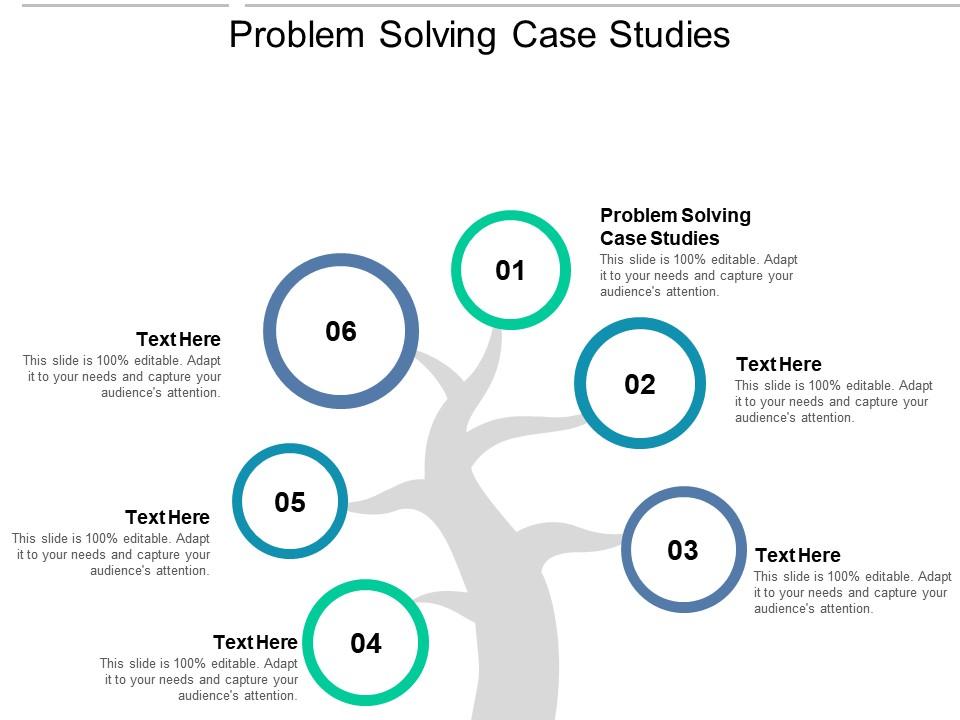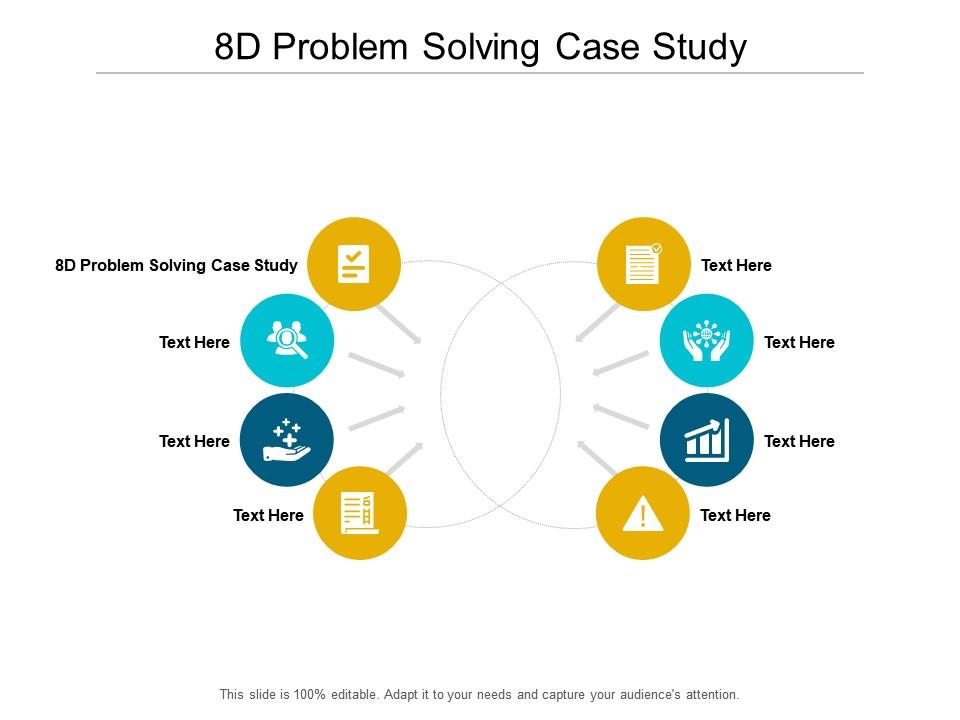Learning from Experience: Case Studies in Problem Solving dives headfirst into how we learn from our mistakes and triumphs. We’ll explore the nitty-gritty of experiential learning, examining the cognitive processes behind it and comparing it to other learning styles. Get ready for a deep dive into real-world examples that show how people tackle problems, overcome obstacles, and ultimately, grow.
This exploration will use carefully selected case studies to illustrate various problem-solving approaches. We’ll analyze what makes a successful case study, examining the criteria for choosing impactful examples and evaluating the reliability of the data. Expect a frank discussion of common pitfalls and how resourceful individuals and teams adapt their strategies to bounce back from setbacks. Think of it as a masterclass in learning from experience, using real-life examples to show how it all works.
Defining “Learning from Experience”

Learning from experience isn’t just about doing something and then knowing it; it’s a dynamic, iterative process where we actively reflect on our actions and their consequences to improve future performance. It’s a continuous cycle of trying, failing, analyzing, and refining our approach. This iterative nature is what sets it apart from other learning methods.Experiential learning involves several interconnected cognitive processes.
First, we engage in an experience, actively participating in a situation or undertaking a task. Next, we reflect on that experience, considering what happened, how we felt, and what we learned. This reflective process is crucial; it’s where we make sense of our actions and their outcomes. Then, we abstract our learning, identifying key principles or patterns from our experience.
Finally, we actively test our newly acquired knowledge and skills in new situations, applying what we’ve learned to improve future performance. This cyclical process allows for continuous refinement and growth.
Cognitive Processes in Experiential Learning
The cognitive processes involved in experiential learning are complex and multifaceted. They go beyond simple memorization and encompass higher-order thinking skills such as analysis, synthesis, and evaluation. For example, consider a student learning to code. They might initially write a program that doesn’t work as intended. Through debugging, they analyze the code, identifying errors in logic or syntax.
They synthesize this information to understand the underlying problem and then evaluate different solutions. Finally, they implement a corrected version of the program, testing its functionality to confirm their understanding. This process, from initial experience to refined understanding and application, showcases the cognitive depth of experiential learning.
Differences Between Experiential Learning and Other Learning Methods, Learning from Experience: Case Studies in Problem Solving
Experiential learning contrasts sharply with other learning approaches. Traditional methods, such as rote memorization or passive lecture-based learning, focus on acquiring knowledge without necessarily applying it in real-world contexts. In contrast, experiential learning emphasizes active engagement and practical application. For instance, simply reading about building a house is vastly different from actually participating in the construction process. The latter provides a depth of understanding and skill development that the former cannot replicate.
Furthermore, unlike learning through observation or simulation, experiential learning involves direct participation and personal involvement, leading to a deeper, more personally meaningful understanding. The consequences of actions are directly felt, strengthening the learning process. Finally, unlike programmed instruction, which is linear and pre-determined, experiential learning is adaptable and responsive to individual needs and the complexities of real-world scenarios.
Case Study Selection Criteria

Choosing the right case studies is crucial for a compelling and effective exploration of learning from experience. A thoughtfully selected set of cases can vividly illustrate key concepts, highlight diverse approaches to problem-solving, and ultimately enhance reader understanding. The selection process should be rigorous, guided by clear criteria to ensure the chosen studies offer valuable insights and contribute meaningfully to the overall learning objectives.Selecting impactful case studies requires a multi-faceted approach.
We need to consider not only the inherent qualities of the case itself but also how well it aligns with the learning goals of the work. The effectiveness of a case study is directly linked to its ability to resonate with the audience, prompting reflection and application of the lessons learned. Data quality and reliability are paramount, ensuring the integrity and credibility of the insights drawn from each case.
Factors Contributing to Case Study Effectiveness
Effective case studies should possess several key characteristics. First, they should present a clearly defined problem or challenge, allowing readers to readily grasp the context. Second, a compelling narrative unfolds, showcasing the decision-making process, actions taken, and the consequences that followed. Third, the case study should highlight the lessons learned – both successes and failures – explicitly, drawing clear connections between actions and outcomes.
Finally, the case should ideally offer opportunities for reflection and application, prompting readers to consider how similar situations might be approached in their own contexts. For example, a case study detailing a company’s successful implementation of a new sustainability initiative would be more effective if it detailed specific challenges encountered, the strategies used to overcome them, and the measurable results achieved.
Conversely, a case study that simply states “the company succeeded” without providing specifics lacks the depth and analytical power needed to be truly effective.
Criteria for Evaluating Case Study Data Quality and Reliability
The credibility of a case study hinges on the quality and reliability of its underlying data. Several criteria should be used to assess this. First, the sources of data should be clearly identified and evaluated for potential biases. Were the data collected through interviews, surveys, internal documents, or other methods? What are the potential limitations of each source?
Second, the data should be presented transparently, allowing readers to critically assess its validity and reliability. Third, the case study should acknowledge any limitations or uncertainties associated with the data. For instance, a case study relying heavily on self-reported data from a small sample size should clearly state this limitation and discuss its potential impact on the conclusions drawn.
Finally, triangulation of data from multiple sources strengthens the case study’s reliability. If similar findings emerge from independent sources, it boosts the confidence in the conclusions presented. A strong case study will not only present the data but also provide a critical analysis of its strengths and weaknesses.
Analyzing Problem-Solving Approaches: Learning From Experience: Case Studies In Problem Solving

This section delves into the diverse problem-solving approaches employed across our selected case studies, highlighting both successful strategies and common pitfalls. By examining these approaches, we aim to extract valuable lessons and best practices applicable to a wide range of problem-solving scenarios. We’ll analyze how different teams and individuals navigated challenges, adapted their strategies, and ultimately achieved (or failed to achieve) their goals.The case studies reveal a fascinating spectrum of problem-solving approaches, ranging from highly structured, analytical methods to more intuitive, iterative processes.
Some teams relied heavily on data analysis and rigorous testing, while others embraced a more flexible, experimental approach. Understanding these differences is crucial for appreciating the nuances of effective problem-solving and recognizing the contexts in which specific methods are most appropriate.
Comparative Analysis of Problem-Solving Methods
Our analysis revealed three primary approaches: a systematic, data-driven approach; a collaborative, iterative approach; and a more individualistic, trial-and-error approach. The systematic approach, often seen in engineering or scientific contexts, emphasized meticulous planning, data collection, and rigorous testing. The collaborative approach, frequently employed in business or design settings, prioritized teamwork, open communication, and iterative feedback loops. Finally, the individualistic approach, sometimes seen in entrepreneurial endeavors, involved a more experimental and adaptive strategy, relying heavily on individual ingenuity and learning from mistakes.
While each approach had its strengths, the case studies also revealed the limitations of each, underscoring the importance of context-specific strategy selection.
Common Pitfalls and Challenges
Several recurring challenges emerged across the case studies. One common pitfall was the failure to adequately define the problem at the outset. This often led to wasted effort and ultimately, ineffective solutions. Another significant challenge was the tendency to prematurely commit to a solution before fully exploring alternative approaches. This often resulted in overlooking superior solutions or failing to anticipate potential problems.
Finally, several case studies highlighted the difficulties associated with effective communication and collaboration, particularly in larger teams. Misunderstandings, conflicting priorities, and a lack of coordination frequently hampered the problem-solving process.
Adaptive Strategies in Response to Setbacks
Successful problem-solving often involves adapting strategies in response to setbacks. Several case studies showcased this adaptive capacity. For example, in one case, a team initially employing a purely data-driven approach encountered unexpected complexities. They adapted by incorporating more qualitative data and stakeholder feedback, ultimately leading to a more robust and effective solution. In another case, a team facing communication breakdowns implemented new collaboration tools and established clearer communication protocols.
These adjustments improved team dynamics and allowed them to overcome their initial challenges. These examples underscore the importance of flexibility and adaptability in navigating the inevitable obstacles encountered during complex problem-solving endeavors.
Ultimately, Learning from Experience: Case Studies in Problem Solving shows us that the path to mastery isn’t always linear. It’s about embracing challenges, analyzing failures, and adapting our approaches. By understanding the cognitive processes involved and dissecting successful (and unsuccessful) problem-solving strategies, we can all become more effective learners and problem-solvers. So ditch the textbook and dive into the real world – your future self will thank you.
Key Questions Answered
What types of case studies will be examined?
The case studies will cover a range of fields and industries, showcasing diverse problem-solving approaches and contexts.
How can I apply what I learn to my own life?
The analysis of case studies will provide practical frameworks and strategies applicable to personal and professional problem-solving.
Are there any prerequisites for understanding this material?
No specific prerequisites are needed; the material is designed to be accessible to a broad audience.


